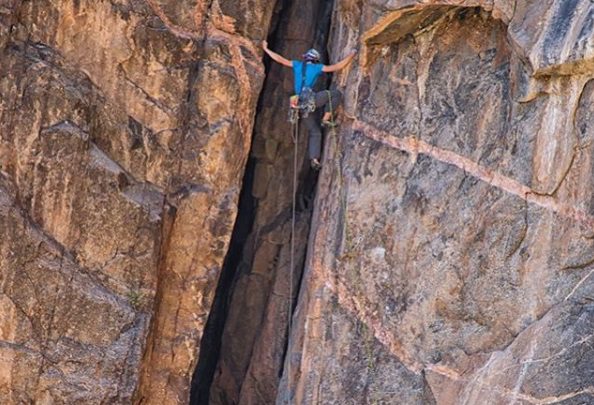Support Climbing Grief Fund By American Alpine Club

The American Alpine Club has started the Climbing Grief Fund which you can donate to in the link below.
“This fund is overdue and we hope it will build tremendously over the years through individual, company and organizational donations,” said Vickie Hormuth, Director of Strategic Partnerships of the American Alpine Club.
The new program hopes to better integrate the grief caused by climbing tragedies into the healing process of individuals and the community.
Impacted by the many tragic events of 2017 (the deaths of Hayden Kennedy and Inge Perkins, and climbing accident of Quinn Brett), Boulder-based professional climber Madaleine Sorkin approached the AAC to create a community resource for grief.
“A place that bears witness to death, our pain and a way to return to the vitality of ourselves,” said Sorkin.
Click below to watch.
The Climbing Grief Fund’s starting goals are: a grief resource webpage (to provide education and a community platform for sharing stories about grief or individuals lost); individual grief counseling grants; group counseling sessions at AAC Craggin’ Classic events; develop a proactive response network after a trauma or death in our community.
The fund is expected to be available beginning Fall of 2018. Donate here.
“I want our climbing community to create a more intentional resource for grief—a place that bears witness to death, our pain and a way to return to the vitality of ourselves,” said Sorkin.
Sorkin continues with, “Perhaps climbing is limited in the ways we can express grief. There are times when not climbing and finding other ways to turn towards one’s wholeness is the most nourishing decision. As a climber for over 20 years and now in my mid-30s, my motivation to achieve and relationship to risk and death are evolving. Parts of me struggle to accept that I no longer am willing to risk my body as I may have in the past. However a wiser-me accepts this evolution as natural and important as I navigate my life’s arc honestly and continue to be in relationship with others and the world.
“Existential questioning and a fear of my own depression have affected my life for many years. This past year was perhaps no different except that the painful circumstances of a friend’s suicide and several friends’ climbing accidents and trauma reminded me that I was ready to be broken open. For a while I needed to stop climbing—to pause on any remaining false idols I was using climbing to chase—to experience grief and sit in my body. I learned to express my longing and connect to my wild nature without climbing. I am still learning to do this. And I also want to return to climbing. I feel deep gratitude to be able to climb, as healthy as I am. It is important to me to maintain my commitment to climb in respectful relationship with myself and to use climbing as tool for renewal and vitality.
“Many climbers return to climbing after a traumatic event (in or outside of climbing) and ideally this return is linked to deep nourishment for themselves. Mary and I return to the Black drawn into dialogue with an ancient mystery that reveals itself in beautiful, intense, and paradoxical ways. We trust the healing power of climbing. The support of our climbing community and therapists has helped us both through dark times. This climb is for the nourishment we can find in the void, in the Black, and for the fierce and gentle persistence to trust life enough to risk returning time and time again.”


